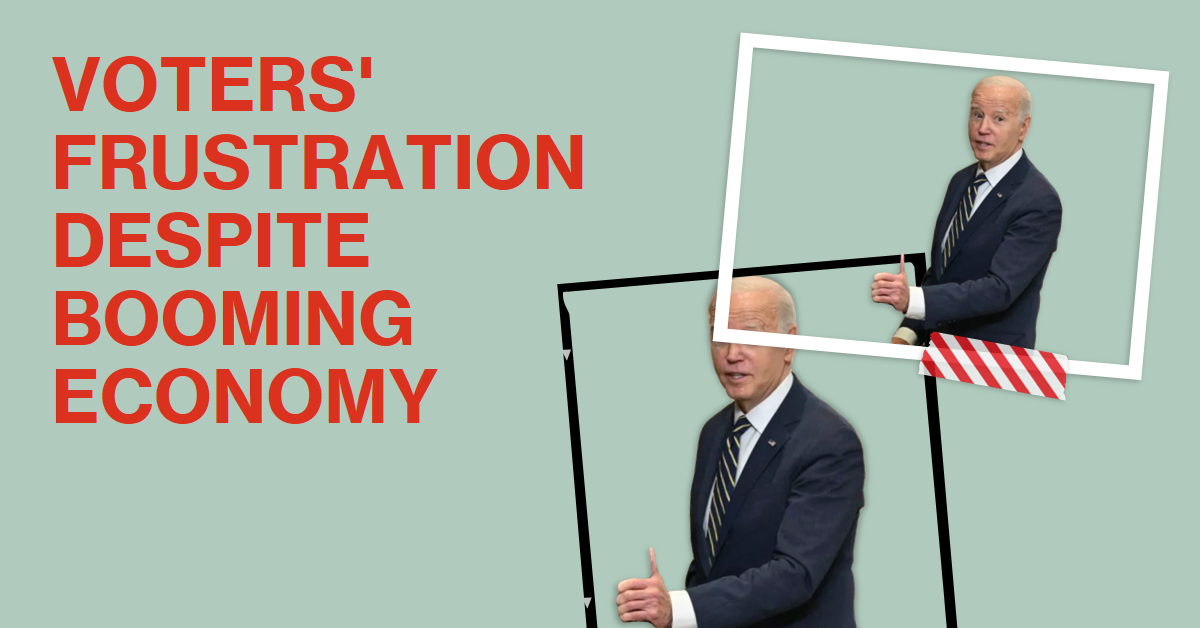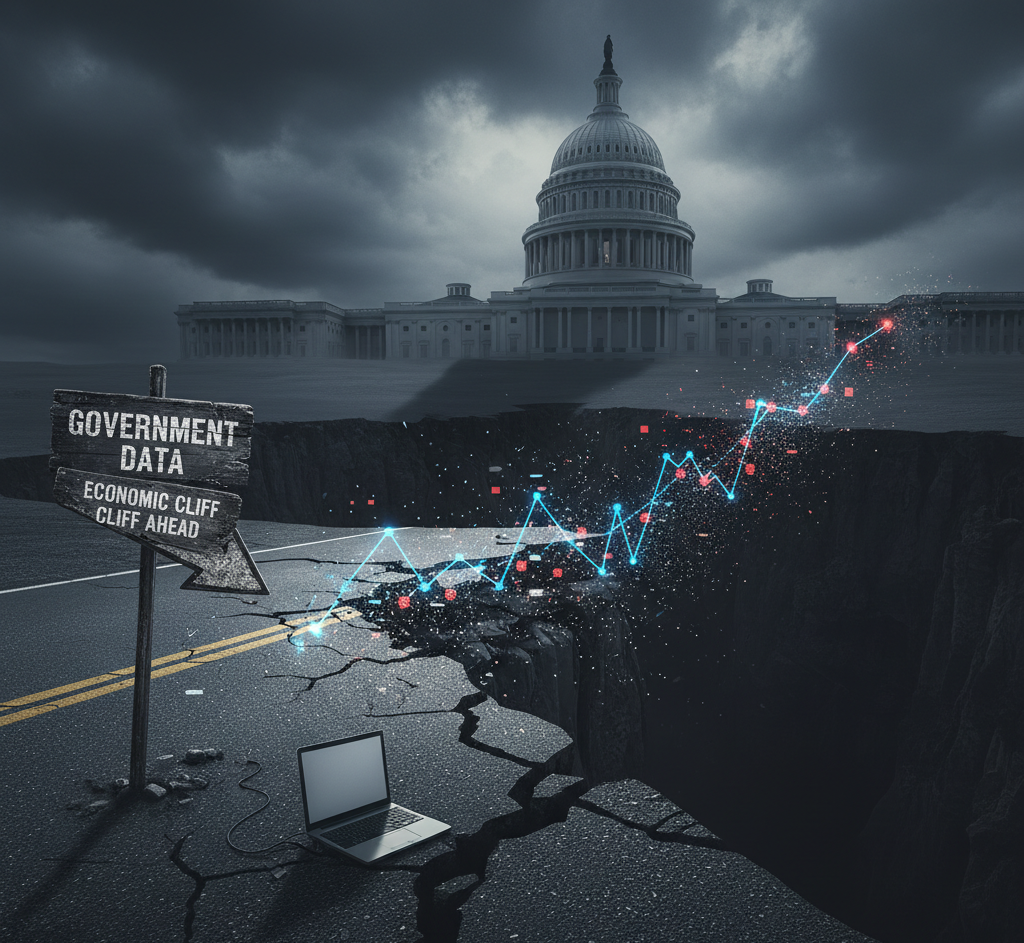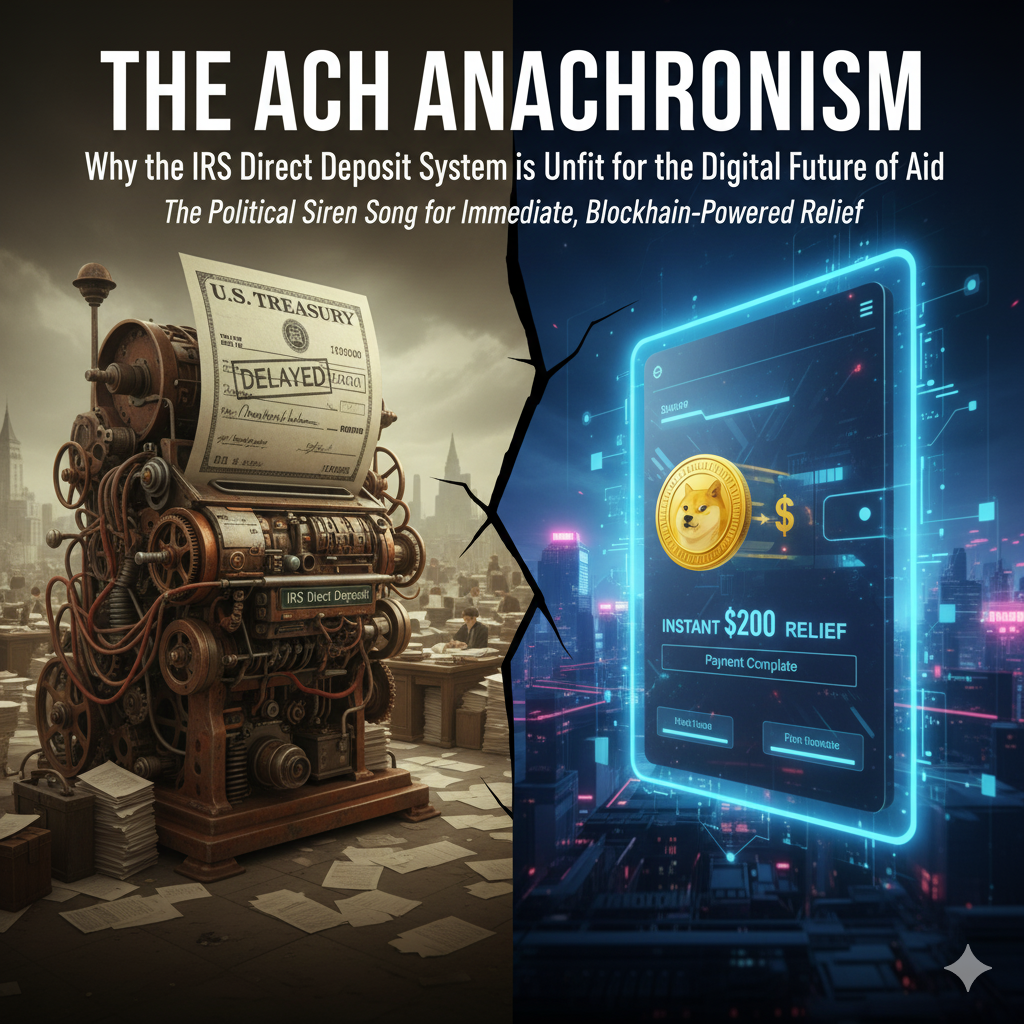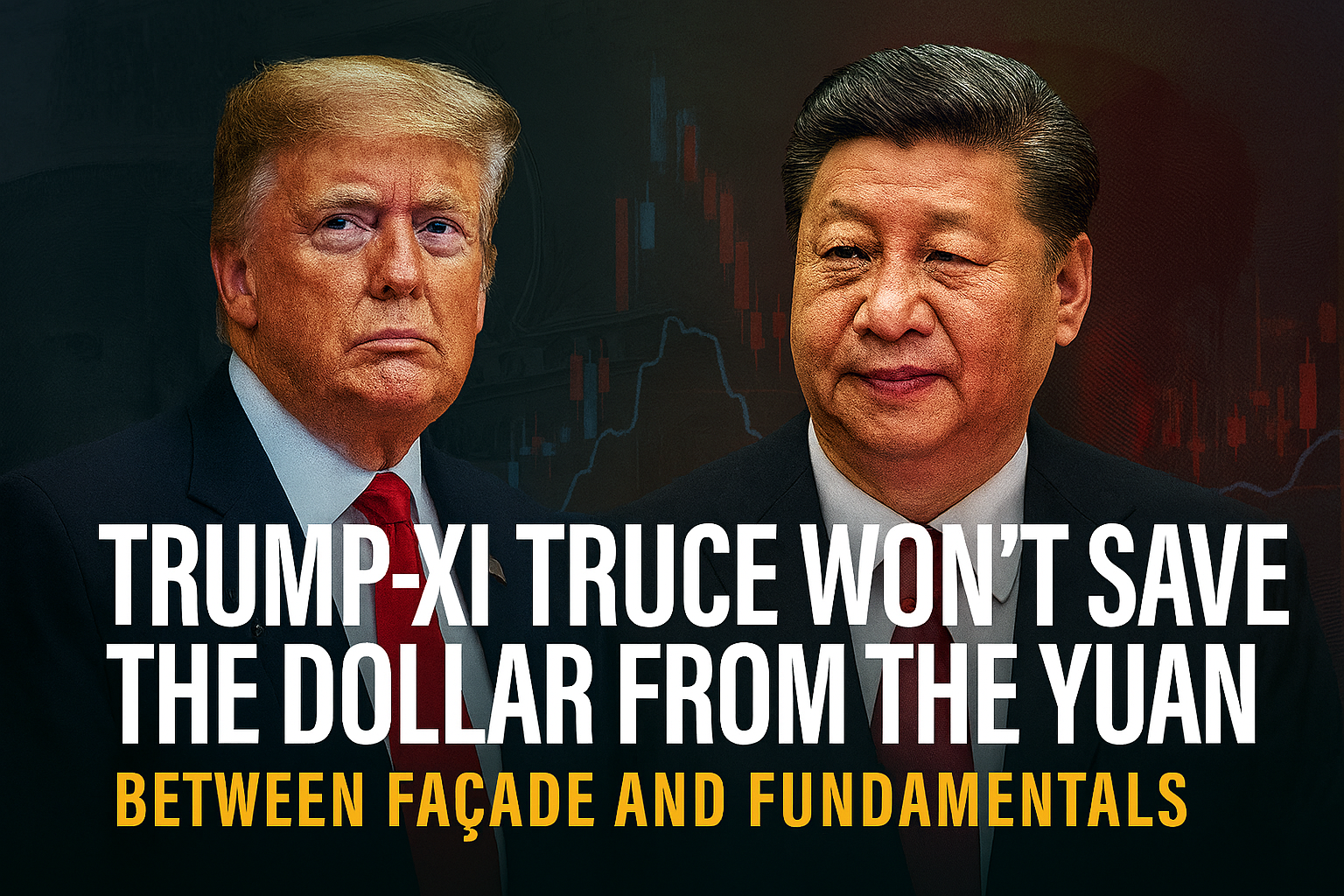Economy
Why Are Voters So Frustrated in the US Despite a Booming Economy?

As the US economy continues to grow at a steady pace, President Biden’s low approval ratings have left many scratching their heads. In this article, we will explore the reasons behind the public’s dissatisfaction despite the economy’s apparent success.
Introduction
President Biden’s low approval ratings have been a topic of discussion among political analysts and the general public alike. Despite the economy’s apparent success, the president’s approval ratings remain low. In this article, we will explore the reasons behind the public’s dissatisfaction and the possible solutions to this problem.
The Economy Appears to Be Humming
The economy appears to be humming. The stock market is hitting record highs. The unemployment rate is near an all-time low. Wages are rising faster than inflation. And inflation has finally cooled. What more must a president do to win over the public? Unfortunately, the variety of explanations bandied about—that prices remain high, that misinformation prevails, that we’re caught in a post-pandemic funk—overlook what is likely the core of today’s problem.
The President Has Done a Great Deal to Improve the Economy
The president has done a great deal to improve the economy—championing investments in infrastructure, bringing manufacturing jobs back stateside, and pointing us toward what we all hope will be a “soft landing.” But he has the misfortune of presiding over a country that has undergone at least a quarter-century of economic carnage for middle- and low-income America. Until recently, however, the extent was shrouded by economic statistics. To be fair, the economy has improved considerably since Biden took office. But, as research by my colleagues at the Ludwig Institute for Shared Economic Prosperity (LISEP) has recently revealed, those improvements come at the tail end of a quarter-century that has been almost uniformly disastrous for the working and middle classes. Most Americans, raised to believe that each generation is supposed to do a bit better than the one before, increasingly have come to feel vulnerable to downward mobility. And the resulting frustration haunts the president’s approval ratings.

The Working and Middle Classes Have Suffered
The extent of the economic carnage for middle- and low-income America has been almost uniformly disastrous for the past quarter-century. Most Americans, raised to believe that each generation is supposed to do a bit better than the one before, increasingly have come to feel vulnerable to downward mobility. The resulting frustration haunts the president’s approval ratings.
The Unemployment Rate Is Near an All-Time Low
The headline unemployment rate is down from 10 per cent at the height of the Great Recession to below 4 per cent today. If you add those who are earning a poverty wage or subsisting in a part-time gig (while preferring a full-time job) to the universe of the “unemployed,” the actual figure is more than 22 per cent—more than one of every five workers. That may be down dramatically from where it was—indeed, to the president’s credit, it’s the best it’s been in nearly 30 years. But that may not be satisfying to someone struggling to maintain their childhood standard of living or worse.
Wages Are Rising Faster Than Inflation
Wages are rising faster than inflation. The median wage today sits at more than $58,000 a year. But if you include workers excluded from that measure—those working part-time and those who are unemployed—and the number comes down to $50,000, a meaningful difference for the median income worker.
Conclusion
In conclusion, President Biden’s low approval ratings are a reflection of the public’s frustration with the economic situation in the country. Despite the economy’s apparent success, the working and middle classes have suffered for the past quarter-century. The president has done a great deal to improve the economy, but he has the misfortune of presiding over a country that has undergone at least a quarter-century of economic carnage for middle- and low-income America. The resulting frustration haunts the president’s approval ratings. It is time for the government to take action to address the concerns of the public and ensure that the economy works for everyone.
Analysis
The Government Shutdown’s Data Gap Is Pushing the US Economy Toward a Cliff

Discussing the U.S. economy is like piloting a sophisticated aircraft through a treacherous mountain pass. Success depends entirely on a constant stream of reliable data from the cockpit instruments. Today, in a stunning act of self-sabotage, Washington has smashed those instruments. The government shutdown economic data gap has plunged us into a statistical blackout, and the US economic outlook is obscured not by external forces, but by our own dysfunction.
This is not a passive statistical inconvenience. This economic data blind spot is an active, high-stakes threat. By failing to fund the basic operations of government, including the Bureau of Labour Statistics (BLS) and the Bureau of Economic Analysis (BEA), Congress has effectively forced the Federal Reserve, corporations, and investors to fly blind. This profound economic uncertainty paralyses investment decisions, chills hiring, and all but guarantees a policy error from a data-starved central bank.
The Fed’s Dilemma: Monetary Policy in a Blackout
The Federal Reserve’s entire modern mandate is “data-dependent.” Every speech, every press conference, every decision hinges on two key datapoints: inflation (the Consumer Price Index, or CPI) and employment (the jobs report).
Now, for the first time in decades, that data is gone.
The White House has already warned that the October jobs and inflation reports may be permanently lost, not just delayed. This economic data blind spot could not come at a worse time. The Fed is at a crucial pivot point, weighing when to begin Federal Reserve interest rate cuts to steer the economy clear of a recession.
Without the BLS data on jobs or the BEA data that feeds into inflation metrics, the Fed is trapped.
- If they cut rates based on “vibes,” as one analyst put it, they risk reigniting inflation and destroying their hard-won credibility.
- If they wait for clean data that may not come for months, they will be acting too late, all but ensuring the “soft landing” evaporates into a hard crash.
Fed officials themselves are admitting they are “driving in the fog.” This isn’t caution; it’s paralysis. We are forcing our central bankers to gamble with monetary policy, and the stakes are a potential recession.
Corporate Paralysis: Why the Data Gap Freezes Investment
This crisis of confidence extends far beyond the Fed. The private sector runs on the same official government data. A CEO cannot approve a nine-figure capital expenditure on a new factory or a C-suite cannot green-light a major hiring spree without a clear forecast.
That forecasting is now impossible. The shutdown impact on investment decisions is direct and immediate.
- Risk Assessment: How can a company model its five-year plan without reliable GDP report inputs or inflation projections?
- Market Sizing: How does a retailer plan inventory without understanding consumer spending or retail sales data?
- Financing: How can a company issue bonds or seek a loan on favourable terms when investors can’t accurately price risk in this environment of economic uncertainty?
When faced with a total lack of information, businesses do not take risks. They default to the safest, most defensive posture: they delay investment, freeze hiring, and hoard cash. This widespread corporate paralysis, in and of itself, is enough to trigger the very economic slowdown everyone fears.
The “Statistical Blind Spot” Has Real-World Consequences
This is not an abstract problem for Wall Street. The economic data blind spot is already hurting Main Street.
The Fed’s forced “hesitancy”—its inability to cut rates due to the data blackout—means borrowing costs stay higher for longer. That small business owner trying to get a loan to manage inventory is paying a higher interest rate. That family trying to buy a home is locked out by mortgage rates that could and should be falling.
The government shutdown economic data gap is a direct tax on American families and entrepreneurs. It’s the price we all pay for a manufactured crisis that has blinded our nation’s economic stewards.
Conclusion: An Unforgivable, Self-Inflicted Wound
The cost of this government shutdown is no longer just about furloughed workers or closed national parks. The real cost is the reckless, high-stakes gamble being placed on the entire U.S. economy.
We are in a fragile economic transition, and our political leaders have just ripped the gauges out of the cockpit. This economic data blind spot is a self-inflicted wound that injects profound risk into the system, invites a recession, and punishes everyday Americans. We must demand an end to this reckless “data blackout” immediately—before our leaders fly the economy straight into the mountainside.
Business
The ACH Anachronism: Why the IRS Direct Deposit System is Unfit for the Digital Future of Aid

The political siren song for immediate, blockchain-powered relief—however hyperbolic the idea of doge checks may be—is forcing a reckoning with the ageing IRS direct deposit infrastructure, a system ill-equipped for instant, mass-scale payments.
The United States government is quietly approaching a major inflexion point in its relationship with its citizens: the speed and method of its financial disbursements. While the current tax season may feature the familiar, reliable process of the IRS direct deposit, the future of federal aid—from universal basic income (UBI) pilots to targeted economic relief—demands a technological leap the Internal Revenue Service is fundamentally unprepared to make. The conflict is straightforward: the political desire for instant, transparent relief directly clashes with a legacy system, the ACH network, which is slow, prone to errors, and structurally resistant to digital innovation. The absurd, yet viral, idea of doge checks—payments tied to volatile digital assets—serves as a useful, if hyperbolic, symbol for the intense political and public pressure to adopt a 21st-century payment infrastructure.
My core argument is this: The future of federal aid hinges on transforming the slow, traditional irs direct deposit relief payment system to handle not just fiat currency, but the inevitable political pushes for digital and crypto distributions, symbolised by the far-fetched idea of doge checks. Failure to act will not only result in massive administrative costs but also undermine the effectiveness of future government interventions, leaving millions of the unbanked behind.
1: The Reliability and Limitations of Traditional Infrastructure
The sheer scale of the existing IRS direct deposit system is impressive. It can manage billions in tax refunds and, as demonstrated during the pandemic, process emergency IRS direct deposit relief payment disbursements to over 150 million Americans. This process, facilitated by the Automated Clearing House (ACH) network, is a testament to the stability of the traditional U.S. banking system.
However, its reliability comes with severe limitations. The ACH network operates on a batch-processing schedule, meaning fund transfer is not instantaneous, often taking several business days to move from the Treasury to an individual bank account. During a crisis, this delay is not merely inconvenient; it is economically damaging, as aid meant to be immediate is delayed.
Furthermore, the integrity of the direct deposit irs system relies on having accurate, up-to-date bank information. During the emergency stimulus payouts, the IRS struggled massively with stale bank account numbers, leading to countless payments being rejected and reverted back to slow, fraud-prone paper checks. A significant percentage of Americans remain unbanked or underbanked, forcing them to rely on costly cheque-cashing services that extract value from the very aid the government provides. Any IRS direct deposit relief payment program that relies solely on this legacy mechanism guarantees a continuation of this disparity, benefiting those already securely entrenched in the formal banking system while penalising the most vulnerable.
2: The Crypto and Novel Payment Concept
The idea of doge checks is admittedly a jest—the notion of the U.S. government issuing relief payments tied to a volatile meme coin is financially reckless and legally complex. Yet, the concept serves as a vital lightning rod for a real political and technological shift. The underlying pressure is for speed, transparency, and a system that bypasses the old banking intermediaries.
Digital payment advocates point to the benefits of blockchain technology: instant settlement, immutable records, and programmable money that could, in theory, ensure funds are spent for their intended purpose. The political allure is undeniable: immediate relief hitting digital wallets, eliminating the delays of the traditional IRS direct deposit system. Imagine a UBI pilot where funds are disbursed in real-time, 24/7, without the weekend and holiday delays inherent in the direct deposit IRS process.
But the challenges of moving beyond the IRS direct deposit relief payment are immense. The IRS currently treats cryptocurrency as property, not currency, for tax purposes. Distributing doge checks or any stablecoin would create immediate, cascading tax complexity for every recipient, requiring the individual to track the value of the digital asset from the moment of receipt until it is spent. This would be a compliance nightmare. Moreover, the security protocols, wallet management, and key custody requirements necessary to protect the government and citizens from hacking, fraud, and lost funds are simply nonexistent within the current IRS direct deposit regulatory framework. The political noise around non-traditional payments is getting louder, but the practical infrastructure is nowhere close to ready.
3: The Path Forward: Digitizing Federal Aid
The solution is not necessarily literal doge checks but rather adopting the spirit of instant digital transfer within the safety of the fiat system. The immediate, achievable goal must be to render the slow, two-to-three-day IRS direct deposit relief payment obsolete.
First, the direct deposit irs system must fully embrace instant payment technologies now available across major banking systems (like FedNow or RTP), allowing funds to clear and settle in seconds, not days. Second, the IRS must partner strategically with regulated digital payment providers and prepaid debit card issuers to provide easy, no-fee digital wallets for the unbanked. The focus must shift from simply gathering bank account numbers to ensuring every eligible citizen has a functional, real-time payment endpoint.
This modernisation effort is not just about speed; it’s about security. The legacy IRS direct deposit system is vulnerable to mass fraud when personal information is compromised. By migrating to modern, tokenised payment methods and leveraging state-of-the-art encryption, the IRS can drastically reduce the risk of fraud while improving service. The demand for instant, transparent funds—the core value proposition embedded within the political hype of doge checks—will not vanish. If the IRS’s direct deposit system doesn’t modernise, it risks becoming a bottleneck that strangles necessary economic aid at the moment of peak crisis.
Conclusion
The challenge facing federal agencies is profound: to move beyond the analogue, batch-processed reality of the IRS direct deposit system and prepare for a digital-first future. The hyperbolic call for doge checks is a powerful symbol, demonstrating the public’s appetite for immediate, unencumbered funds. That political will, however disruptive, must catalyse change. The failure of the direct deposit IRS to handle the scale and speed of a modern crisis will be more than an administrative delay; it will be an economic and moral failure. The question is whether the inertia of the current system will prevail, or if the demands of future aid will force a rapid, potentially chaotic leap into digital disbursement methods, ensuring that the legacy of the doge checks concept is not a joke but a powerful catalyst for necessary technological evolution.
Business
Trump-Xi Truce Won’t Save the Dollar from the Yuan

A temporary handshake in Busan cannot disguise the deeper structural erosion of dollar dominance and the steady, deliberate rise of the yuan.
When Donald Trump and Xi Jinping emerged from their October summit in Busan, markets reacted with the usual mix of relief and scepticism. Gold ticked up 1.2%, Asian equities softened, and U.S. futures wobbled—hardly the euphoric rally one might expect from what Trump called “a 12 out of 10” meeting. The deal, which paused Chinese rare-earth export controls and promised renewed soybean purchases, was hailed as a “historic truce” by the White House. Yet the muted market response told a deeper truth: investors know that this is theater, not transformation.
The core thesis is simple: this truce does nothing to alter the structural trajectory of global finance. The dollar’s dominance is eroding under the weight of U.S. fiscal excess and its own weaponization, while the yuan’s internationalisation—though gradual—is accelerating. The world is not waiting for Washington or Beijing to declare peace; it is already moving toward a multipolar currency order.
1: The ‘Trucified’ Mirage
The Busan agreement was transactional diplomacy at its most transparent. China agreed to suspend rare-earth export controls for a year, resume large-scale agricultural imports, and ease pressure on U.S. semiconductor firms. In return, Washington halved certain tariffs and promised to “re-engage” on technology licensing. Both sides declared victory, but the underlying rivalry remains untouched.
This is not the first time markets have been asked to celebrate a ceasefire in the U.S.-China economic war. Recall the “Phase One” deal of 2020, which promised massive Chinese purchases of U.S. goods that never fully materialised. The pattern is familiar: temporary concessions, symbolic gestures, and a brief pause in escalation. What is never addressed are the structural drivers of conflict—China’s ambition to dominate advanced technologies, Washington’s bipartisan consensus on decoupling, and the geopolitical competition stretching from the South China Sea to Africa.
The truce is a mirage because it assumes that transactional fixes can mask strategic divergence. They cannot. The U.S. is not going to stop restricting Chinese access to advanced chips, nor will Beijing abandon its push for technological self-sufficiency. Investors who mistake this truce for stability are ignoring the tectonic forces at play. The rivalry is permanent; the truce is temporary.
2: The Dollar’s Self-Inflicted Wounds
If the yuan is rising, it is not only because of Beijing’s ambition but also because of Washington’s missteps. Two structural risks stand out: fiscal profligacy and the weaponisation of the dollar.
First, the fiscal picture. U.S. federal debt has surged to over $36 trillion in 2025, according to the St. Louis Fed, up from roughly $18 trillion a decade ago. Debt-to-GDP now hovers near 125%, levels typically associated with emerging markets in crisis rather than the world’s reserve currency issuer. Investors may tolerate high debt for a time, but persistent deficits erode confidence in the dollar’s long-term purchasing power.
Second, the weaponization of the dollar has accelerated since 2014, when sanctions on Russia highlighted the risks of overreliance on the greenback. The freezing of Russian central bank reserves in 2022 was a watershed moment. Allies and adversaries alike saw that dollar assets could be rendered unusable overnight if Washington disapproved of their policies. This has spurred diversification.
The data is clear: the dollar’s share of global foreign exchange reserves has slipped from 66% in 2015 to around 58% in 2025, according to IMF data. That decline may look modest, but in a $12 trillion reserve universe, it represents hundreds of billions shifting into euros, yen, gold, and increasingly, yuan.
The irony is that Washington’s own policies—fiscal recklessness and sanctions overreach—are accelerating the very de-dollarisation it fears. The dollar is not collapsing, but its aura of invincibility is fading.
3: The Yuan’s Quiet Ascent
While Washington undermines its own currency, Beijing is methodically building the yuan’s global footprint. This is not a frontal assault on dollar hegemony but a patient campaign of incremental gains.
Consider trade settlement. According to DW, nearly one-third of China’s $6.2 trillion trade in 2025 is now settled in yuan, up from just 20% in 2022. This shift is particularly pronounced in energy: Chinese refiners are increasingly paying for Russian oil and Middle Eastern gas in yuan, bypassing the dollar entirely.
Financial infrastructure is another front. The Cross-Border Interbank Payment System (CIPS), Beijing’s alternative to SWIFT, now processes trillions in annual transactions. While still smaller than SWIFT, it provides a sanctions-proof channel for yuan payments. At the same time, the digital yuan is being piloted in cross-border settlements, offering a programmable, state-backed alternative to dollar clearing.
Foreign holdings of yuan assets are also climbing. SWIFT data shows the yuan recently overtook the Japanese yen to become the fourth most-used currency in global payments, with a record 4.6% share. That may seem small compared to the dollar’s 40%+ share, but the trajectory is unmistakable.
The constraint, of course, remains China’s capital account controls. Beijing is unwilling to fully liberalize for fear of destabilizing capital flight. Yet even within these limits, yuan internationalization is advancing. Currency swaps with over 40 central banks, commodity contracts priced in yuan, and the steady rise of yuan-denominated bonds in Hong Kong all point to a currency whose global role is expanding, not retreating.
The yuan will not replace the dollar tomorrow. But its ascent is relentless—and irreversible.
4: The Path to a Multipolar Currency World
The real story is not a binary contest between dollar and yuan but the emergence of a multipolar currency system. The euro remains a formidable reserve currency, accounting for roughly 20% of global reserves. Emerging markets are increasingly settling trade in local currencies, while BRICS+ nations are openly discussing alternatives to the dollar in energy trade. The yuan is the most dynamic challenger, but it is part of a broader trend: the fragmentation of global finance into overlapping blocs. The unipolar dollar era is ending; the multipolar era is beginning.
Conclusion
The Trump-Xi truce is a headline, not a turning point. The forces reshaping global finance are structural, not cyclical. America’s debt addiction and sanctions diplomacy are eroding trust in the dollar, while China’s deliberate yuan strategy is bearing fruit. The result will not be a sudden dethronement but a gradual rebalancing toward a multipolar currency world.
Policymakers in Washington may celebrate temporary truces, but investors should look past the photo ops. The dollar’s dominance is no longer guaranteed. The yuan’s rise is not a question of if, but how fast.
-
Digital5 years ago
Social Media and polarization of society
-
Digital5 years ago
Pakistan Moves Closer to Train One Million Youth with Digital Skills
-
Digital5 years ago
Karachi-based digital bookkeeping startup, CreditBook raises $1.5 million in seed funding
-
News5 years ago
Dr . Arif Alvi visits the National Museum of Pakistan, Karachi
-
Digital5 years ago
WHATSAPP Privacy Concerns Affecting Public Data -MOIT&T Pakistan
-
Kashmir5 years ago
Pakistan Mission Islamabad Celebrates “KASHMIRI SOLIDARITY DAY “
-
Business4 years ago
Are You Ready to Start Your Own Business? 7 Tips and Decision-Making Tools
-
China5 years ago
TIKTOK’s global growth and expansion : a bubble or reality ?

























